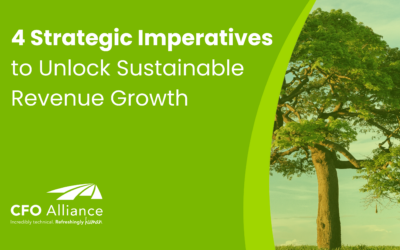Future-Proof Your Workforce with a Modern Talent Agenda
What does the future of talent look like? It’s a fair question, especially in light of the continued uncertainty in the economy. In 2021, we wrote about the importance of developing an agile workforce strategy as companies emerged from the effects of Covid-19. That information is still relevant, but it looks a little different today as the economy fluctuates and workforce needs evolve.
The good news is that job growth remains stronger than it was in 2021. Despite high-profile layoffs at companies like Google, Microsoft, and Amazon, unemployment rates are the lowest they have been since before the pandemic, with some states reporting jobless rates as low as 2.0%.
The bad news is that the economy is still uncertain. In this environment, companies need to build a workforce strategy that can meet the needs of today while also leveraging technology and innovation for the demands of tomorrow.
Flexibility: The Basis of a Modern Talent Agenda
Today’s workforce is much more flexible than it was in the past. Founders no longer have to depend on the traditional linear method of hiring first an accountant, then a controller, then a CFO, and so on. Instead, founder-led companies can take many different approaches to meeting their talent needs as they can grow. Let’s take a look at 4 alternatives to the full-time hire:
- Outsourcing – Outsourcing can be a great way to save money and time on functions outside the core of your business. An outsourced services provider will have expertise and resources you don’t have in these areas. They can also help you scale more quickly by adding the exact mix of talent you need, when you need it. If you choose this solution, look for a reputable provider that will provide flexibility in service offerings and work alongside you as your partner.
- Partnerships – Partnerships involve a deeply collaborative relationship where two companies share resources and expertise to improve both service offerings. This can be a great way to expand your reach and grow your business without having to hire additional full-time team members. In some cases, it might make sense to create a partnership to deliver broader, more robust solutions with each partner fulfilling a portion of the service offering.
- Contractors – Approximately 1 in 5 workers in the U.S. are contractors who perform a specific job for a fixed period of time. Many companies hire contractors, or gig workers, to work on short-term projects and tasks, and others rely on them long-term for unique skill sets. Contractors bring specialized expertise to a project, and they can also be a cost-effective way to fill skills gaps. Working with contractors makes it easy to scale your workforce up or down quickly to meet demand.
- Technology – In the coming years, companies will increasingly rely on AI, automation, and machine learning to streamline their workforce and free human workers to focus more on core business activities. To get the most value from your technology, it’s important to have tech-forward people on your team. These team members should be comfortable with technology and good at identifying creative ways to improve efficiency and productivity with new tools.
Build with the Future in Mind
No matter which direction you move with your workforce, always build towards the future you envision for your company. That may mean following a different talent strategy today than you would have chosen yesterday, and it will undoubtedly require flexibility.
At CFO Alliance, we always encourage founders to start with the end in mind. Our team of financial leaders and doers will help you put the infrastructure, systems, processes, and people in place now to support your growth objectives for the future.
Contact us today to start the conversation!
4 Strategic Imperatives to Unlock Sustainable Revenue Growth
4 Strategic Imperatives to Unlock Sustainable Revenue GrowthCreating long-term, sustainable revenue growth takes more...
Future-Proof Your Workforce with a Modern Talent Agenda
Future-Proof Your Workforce with a Modern Talent AgendaWhat does the future of talent look like? It’s a fair question,...
The Talent Behind the Tech: How Skills-Based Hiring Supports Technology Innovation
The Talent Behind the Tech: How Skills-Based Hiring Supports Technology InnovationStaying relevant with technology in...




